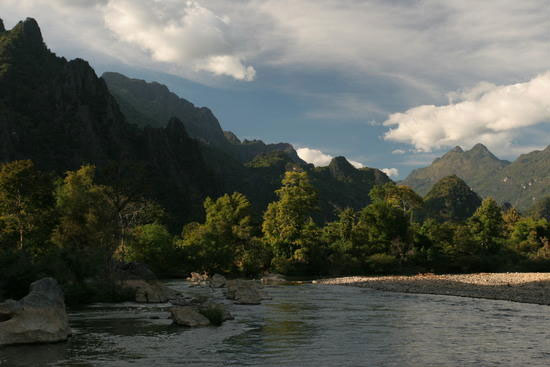Karst terrain contains a lot of climate information
15% of the continental area on our planet has karst topography. The place is characterized by the cave system, which according to Chris Groves - Director of the China Environmental Monitoring Project of the Western Institute of Hoffman Environmental Studies (United States) if the discovery door is expanded, This will be a source of abundant and important practical data for climate research scientists.
In an article published on Circle of Blue's environmental page, Chris Groves explained how the karst caves and terrain kept a clue about the earth's climate.
From animal fossils and traces of ancient people, modern science has been able to wade back in time to learn about climate change and environmental conditions in the past. The data has also been supplemented when experts analyze chemical components in stalactites and stalagmites - the result of mineral deposition and accumulation by limestone water erosion over thousands of years.

Caves and karst terrain keep a lot of information about the earth's climate
On the cross-section of stalactites there are concentric circles, it also has the same meaning as the wood grain, indicating the age of the stalactite, although this determination requires high technology. Chemical and mineral composition tests on each age ring of stalactites will see differences over time, but if the oxygen content analysis can predict the cave temperature during stalactites and heat formation Annual average level on the surface of the cave system. Stalactites and similar forms of material also reveal information related to the vegetation associated with the cave.
The speed of cave formation indicates how climate change in the past, how moisture or drought has happened. Climate fluctuates over thousands of years, with the background of temperature fluctuating and decreasing many times. These details leave a mark on the size, structure and composition of the cave today.
Chris Groves also said today researchers are trying to find a solution to the effect of abrasive processes and dissolving the original limestone to the amount of carbon dioxide in the atmosphere.
The concentration of CO 2 in the atmosphere is highly dependent on how much CO2 is 'pumped' into the atmosphere each year from human activities, but there are other sources that emit or absorb CO2 themselves. course, such as plant growth, or ocean interaction.
In nature, a certain percentage of CO 2 in the atmosphere dissolves into water to form weak carbonic acid, which is much more powerful when water erodes limestone and forms caves. Thus, part of the carbon originated from the atmosphere has merged with water-soluble carbon streams in rivers and streams to eventually flow into the sea and oceans.
Compared to the impact of human fossil fuel burning activities, although this natural process is only modest, scientists are continuing to study to more accurately note the importance of This carbon shift and see how it will be balanced with mineral interactions in the oceans.
- China discovered a hole in the pit deeper than 100m
- 'Training' successful two-legged robot over complicated terrain
- Dutch mountains erect fake terrain
- 'Ghost robots' know how to dive, fly and climb all terrain
- Huge pool of sediments beneath the world's most mysterious continent
- 1.5 g heavy robot 'accepts' all types of terrain by mimicking cockroaches
- Wheelchairs cross the terrain named TN98
- Saigon students make wheelchairs in excess of the terrain with international awards
- Magic wheel 'magic' adapted to all land terrain
- 'Resting clothes' for all terrain
- Mediterranean climate
- Climate change is a global concern but for this animal is happiness
 Is the magnetic North Pole shift dangerous to humanity?
Is the magnetic North Pole shift dangerous to humanity? Washington legalizes the recycling of human bodies into fertilizer
Washington legalizes the recycling of human bodies into fertilizer Lightning stone - the mysterious guest
Lightning stone - the mysterious guest Stunned by the mysterious sunset, strange appearance
Stunned by the mysterious sunset, strange appearance